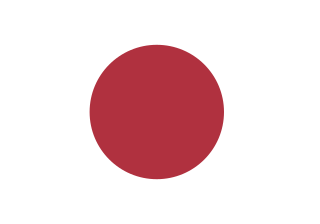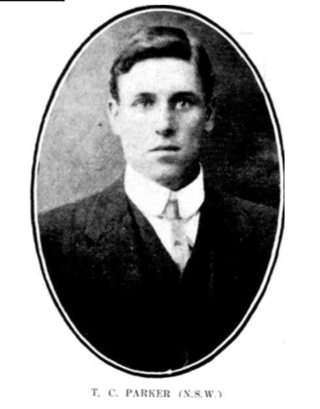Related Research Articles

Sweden competed at the 1960 Summer Olympics in Rome, Italy. 134 competitors, 115 men and 19 women, took part in 100 events in 15 sports.

Sweden competed at the 1936 Summer Olympics in Berlin, Germany. 171 competitors, 163 men and 8 women, took part in 84 events in 17 sports.

Norway competed at the 1952 Summer Olympics in Helsinki, Finland. 102 competitors, 96 men and 6 women, took part in 72 events in 14 sports. Earlier in the year, Norway had hosted the 1952 Winter Olympics in Oslo.

The Empire of Japan competed at the 1936 Summer Olympics in Berlin, Germany. 179 athletes competed in 13 sports and also participated in art competitions. In art competitions, Japan won 2 bronze medals by Ryuji Fujita in paintings and also Sujaku Suzuki in drawing and water colours.

Leo Wilhelm "Willie" Wilkens was a Swedish rowing coxswain who competed in the 1912 Summer Olympics. He won a silver medal in the coxed four, inriggers, and failed to reach the finals of the eight tournament.
Simon Charles Dickie was a New Zealand rowing cox who won three Olympic medals.
Leslie James O'Connell is a New Zealand former representative rower. He was a two-time world champion and an Olympic champion who won his Olympic gold medal at the 1984 Summer Olympics in Los Angeles in the men's coxless four.
Romano Sgheiz is an Italian competition rower and Olympic champion.
Ivo Stefanoni is an Italian rowing cox and Olympic champion.

Igor Aleksandrovich Rudakov is a Russian former coxswain who competed for the Soviet Union in the 1960, 1964, 1968, and in the 1972 Summer Olympics.

Harald Jährling was a German rower who competed for East Germany in the 1976 Summer Olympics and in the 1980 Summer Olympics.

The men's coxed pair rowing competition at the 1980 Summer Olympics took place at Krylatskoye Sports Complex Canoeing and Rowing Basin, Moscow, Russian SFSR, Soviet Union. The event was held from 20 to 27 July. There were 11 boats from 11 nations, with each nation limited to a single boat in the event. The event was won by Harald Jährling, Friedrich-Wilhelm Ulrich, and coxswain Georg Spohr of East Germany, the first men to successfully repeat as Olympic champions in the event. It was also the first time that a crew of the same three men earned multiple medals of any colour. East Germany's three straight medals matched the United States for most among nations to that point. Silver went to the Soviet Union again, though with an entirely different team from its 1976 runner-up crew; the silver medalists this time were Viktor Pereverzev, Gennadi Kryuçkin, and cox Aleksandr Lukyanov. Duško Mrduljaš, Zlatko Celent, and cox Josip Reić earned Yugoslavia's first medal in the event with their bronze.
Toni James Dunlop is a New Zealand rower and has represented New Zealand three times at the Olympics.

The men's coxed four competition at the 1956 Summer Olympics took place at Lake Wendouree, Ballarat, Australia. It was held from 23 to 27 November and was won by the team from Italy. There were 10 boats from 10 nations, with each nation limited to a single boat in the event. Italy had previously won this event in 1928, tying Switzerland for second-most wins among nations. Sweden (silver) and Finland (bronze) each won their first medal in the men's coxed four. Switzerland had its three-Games silver-medal streak broken, without a Swiss crew competing.

The men's coxed four (M4+) competition at the 1984 Summer Olympics took place at Lake Casitas in Ventura County, California, United States. There were 8 boats from 8 nations, with each nation limited to a single boat in the event. It was held from 30 July to 5 August and the dominant nations were missing from the event due to the Eastern Bloc boycott. Great Britain dominated the regatta, winning the nation's first rowing gold since the 1948 Summer Olympics, back then in front of their home crowd at the Henley Royal Regatta course. The 1984 event started Steve Redgrave's Olympic rowing success that would eventually see him win five Olympic gold medals. It was Great Britain's first victory in the men's coxed four and first medal of any colour in the event since 1912. The other medaling nations had also not been to the podium in the coxed four recently; the United States took silver, that nation's first medal in the event since 1952, while New Zealand's bronze was its first medal since 1968.

The men's eight (M8+) competition at the 1984 Summer Olympics took place at Lake Casitas in Ventura County, California, United States. It was held from 31 July to 5 August. There were 7 boats from 7 nations, with each nation limited to a single boat in the event. New Zealand had won the last two world championships, and the other strong team, East Germany, was absent from the event due to the Eastern Bloc boycott. This made New Zealand the strong favourite. But the final was won by Canada, with the United States and Australia the other medallists, and New Zealand coming a disappointing fourth.

Thomas Cornelius Parker was an Australian rower who competed at the 1912 Summer Olympics.

Harry Ross-Soden was an Australian rower who competed at the 1912 Summer Olympics.

Roger Berkeley Fitzhardinge was an Australian rower. He was a dual Australian champion who stroked an Australian crew which won the Grand Challenge Cup at the Henley Royal Regatta in 1912 and the Australian men's eight at the 1912 Summer Olympics.

Robert George Krulock "Ken" Waley was an Australian coxswain who competed in the 1912 Summer Olympics. He was Australia's first selected representative coxswain.
References
- ↑ "Wilhelm Brandes". Olympedia. Retrieved 29 May 2021.
- ↑ Evans, Hilary; Gjerde, Arild; Heijmans, Jeroen; Mallon, Bill; et al. "Wilhelm Brandes". Olympics at Sports-Reference.com. Sports Reference LLC. Archived from the original on 17 April 2020. Retrieved 15 April 2018.